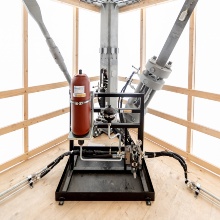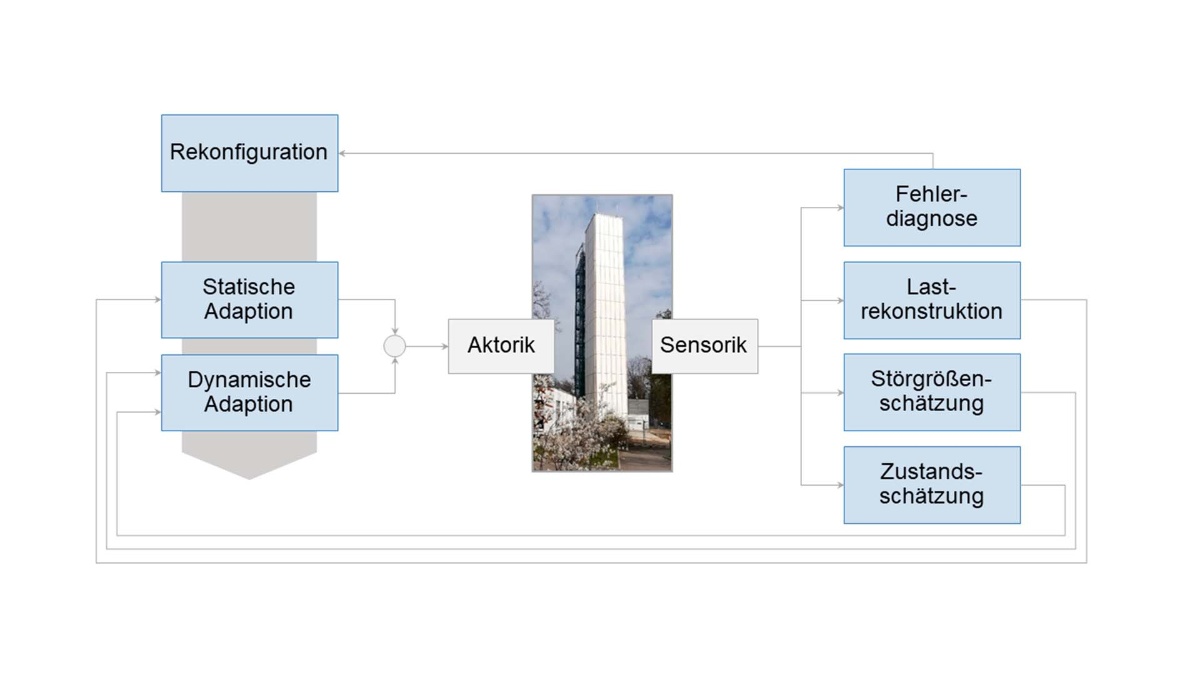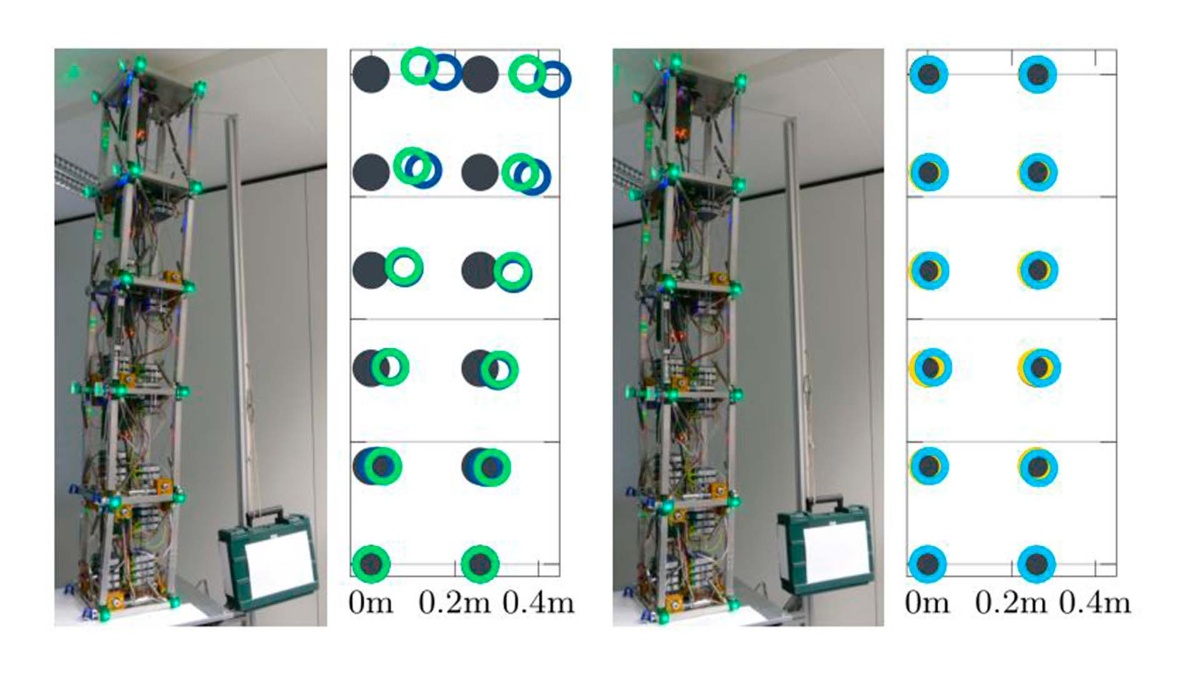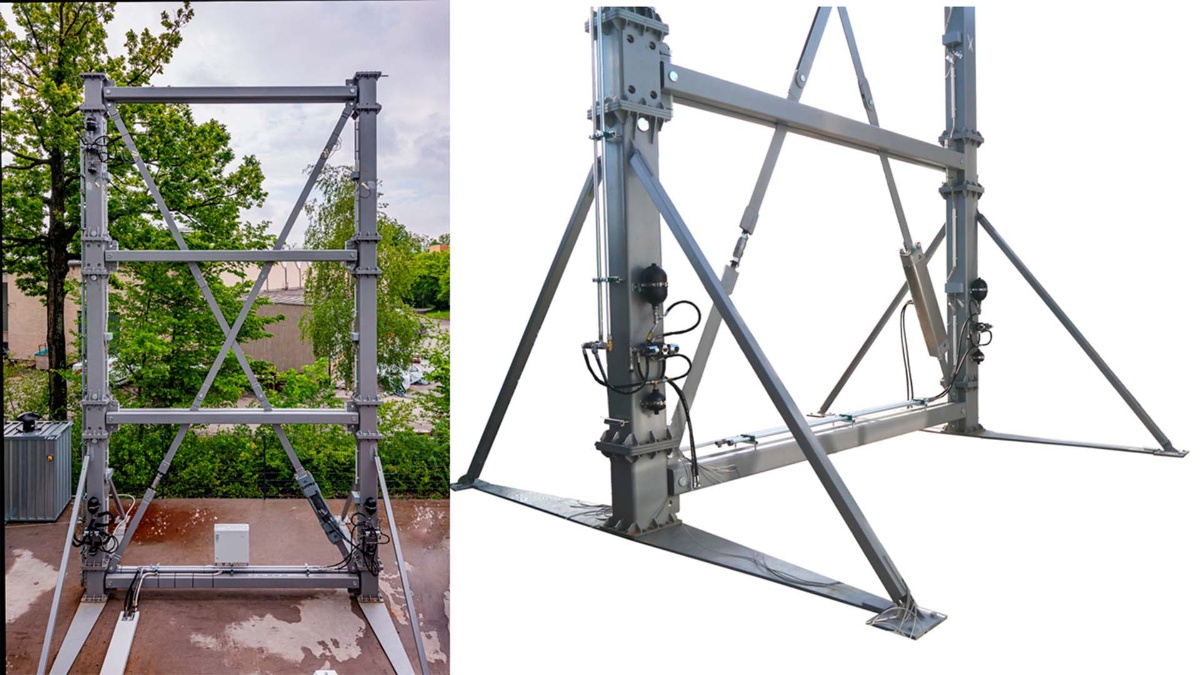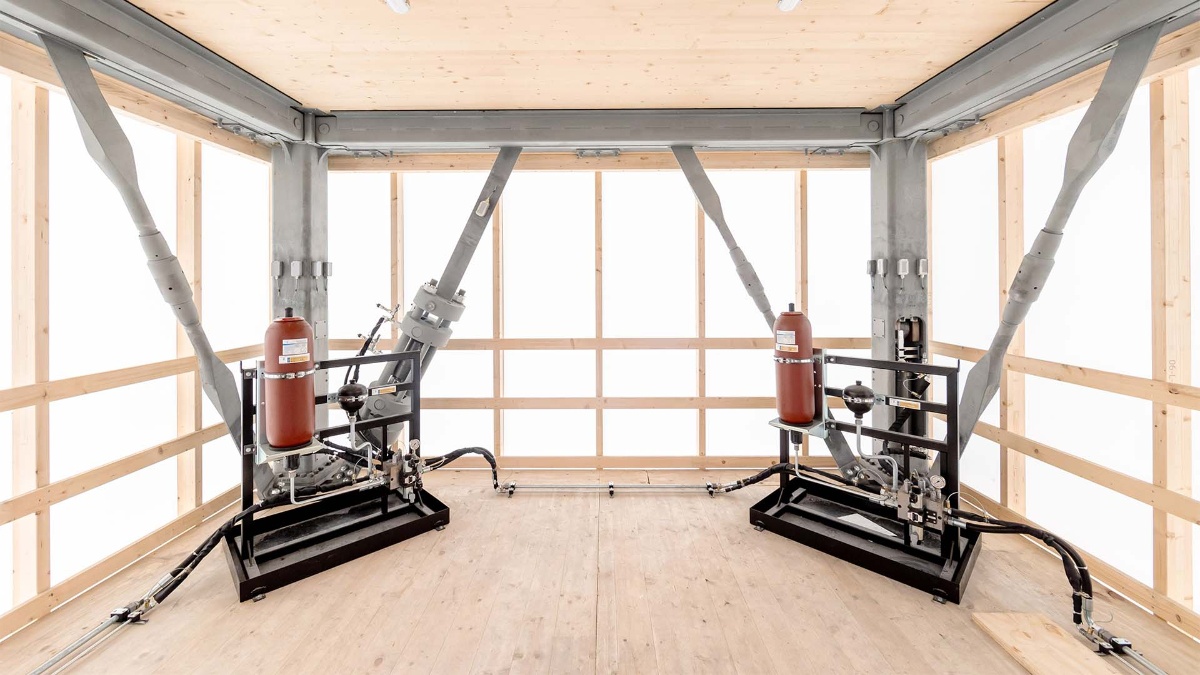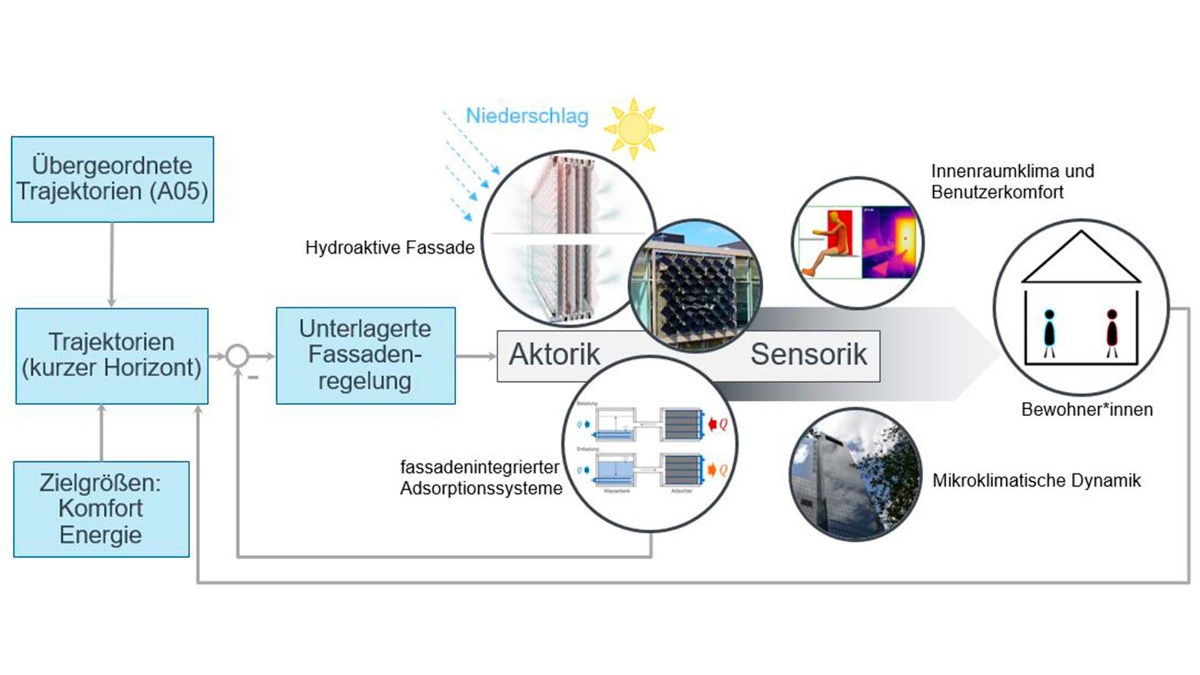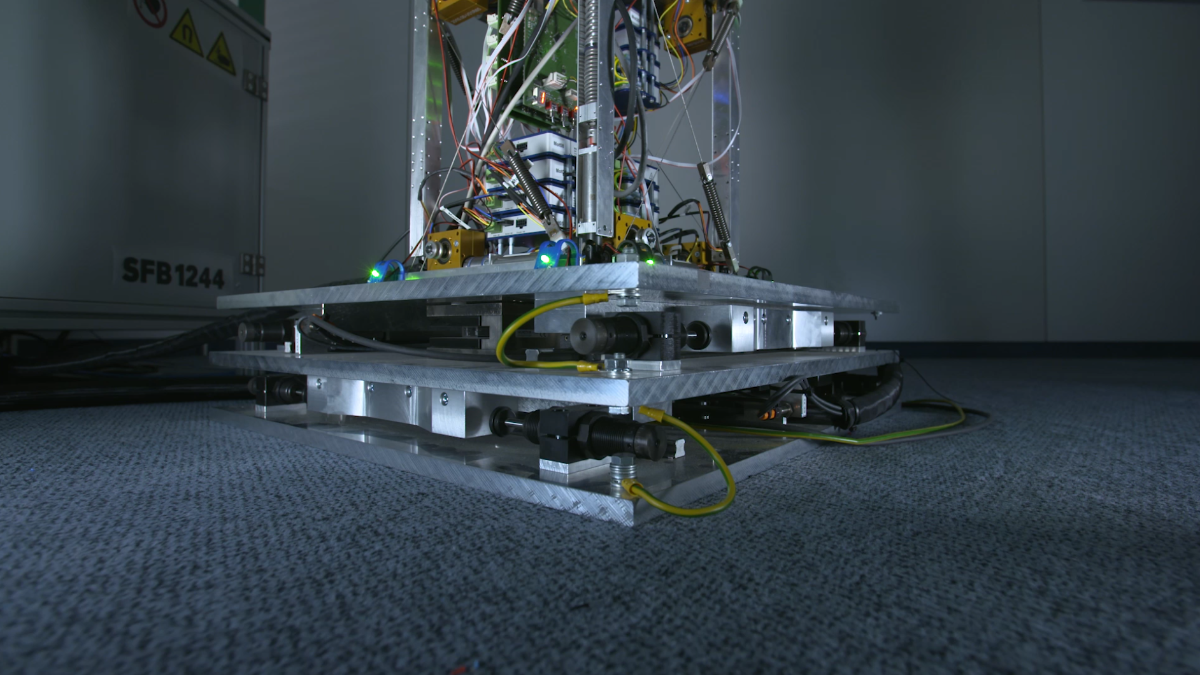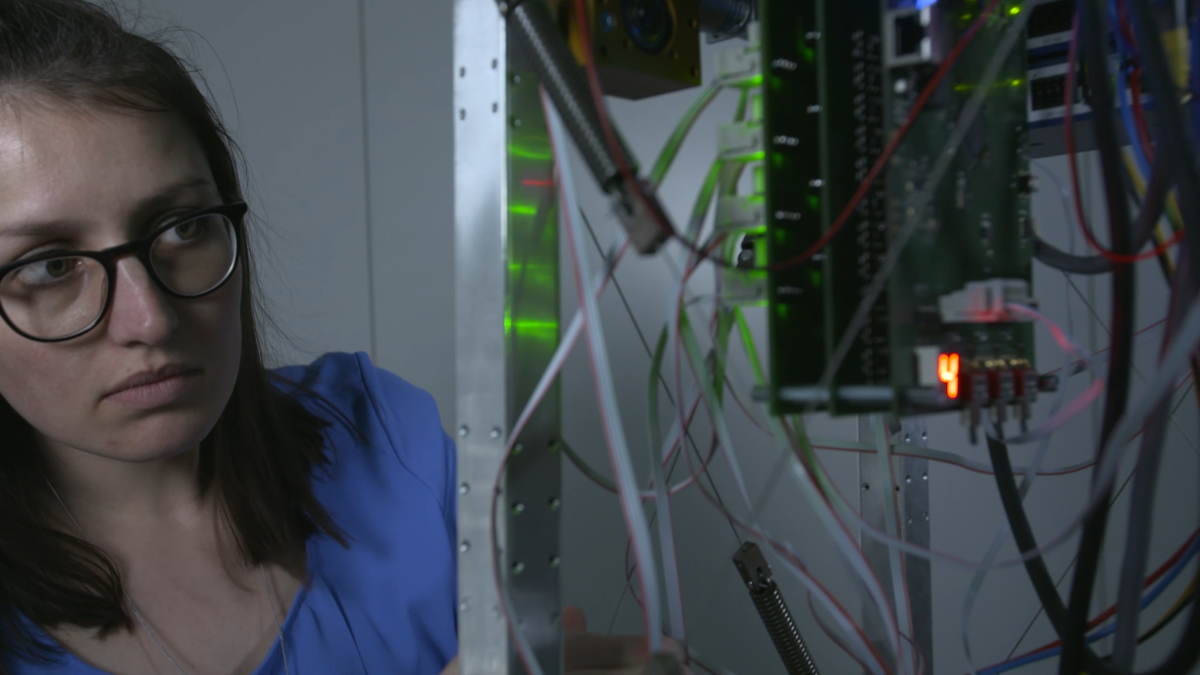Funding Phase II
Project B04 is divided into two parts. The first part focuses on modeling and control design for adaptive structures. One main aspect is the modeling of large beam structures composed of different elements (beams, plates, etc.). In this context, methods for substructuring of complex structures based on interaction measures are developed. Subsequently, optimal decentralized control concepts are applied to these substructures. Further, the control design aims at homogenizing stress distribution over the building parts in the context of wear leveling and thus the increase of safety and life expectancy of the structure. Furthermore, an algorithm for optimal distribution of the input forces over the two controller goals - static load compensation and dynamic vibration damping – is developed.
A further key aspect of the project is modeling of adaptive surface structures and the subsequent control design with focus on disturbance compensation. Hereby, distributed parametric approaches are applied, since the compensation of locally and temporally varying loads requires locally distributed inputs.
The generalization of the methods to further structures, such as bridges, also plays an essential role in the research work. The focus here is on minimizing load cycles in order to extend the life expectancy of bridges.
An additional focus is set on the experimental validation on the adaptive high-rise building, constructed on the site of University of Stuttgart (Z01), on the fluidically actuated plate structure, developed in project C02, and on the adaptive bridge from C07.
The second part of B04 deals with modeling and control of novel adaptive façade concepts. The hydroactive façade from C01 absorbs water from precipitation directly on the outer skin of the building. This water is later either evaporated from the façade for latent cooling of the urban space or used as gray water in toilets or washing machines, for example.
Subproject B04 develops a mathematical model to describe all relevant physical effects in and around the multi-layer hydroactive façade using a distributed parameters approach, which leads to a convection-diffusion PDE. Primary goals are maximizing the water uptake of the façade and controlling the water release from the façade. Furthermore, inter-day strategies for the utilization of the collected water are developed.
For the thermal influence of the interior, the façade-integrated adsorption system from C06 is considered, for which the subordinate control concept is designed in B04. Given the operating points by subproject A05, the design will take the predicted weather conditions, and the changing user requirements into account. This leads to a mixed-integer optimal control problem due to the discrete-valued manipulated variables.
Modeling of the indoor climate is indispensable for the representation of the user comfort. For this, a unizonal model of the temperature and humidity dynamics is used.
Subproject Leader
- Prof. Dr.-Ing. Oliver Sawodny, Institute for System Dynamics
- Dr.-Ing. Michael Böhm, Institute for System Dynamics
Funding Phase I
A key aspect of adaptive buildings is their automated response to stationary and dynamic loads, both of internal or external origin and a priori unknown. This functionality has to be guaranteed over the entire lifetime. The adaptation requires a control design, in which the truss structure is manipulated using the available actuators based on estimated states and loads. Design and experimental validation of these methods is a primary goal of this project.
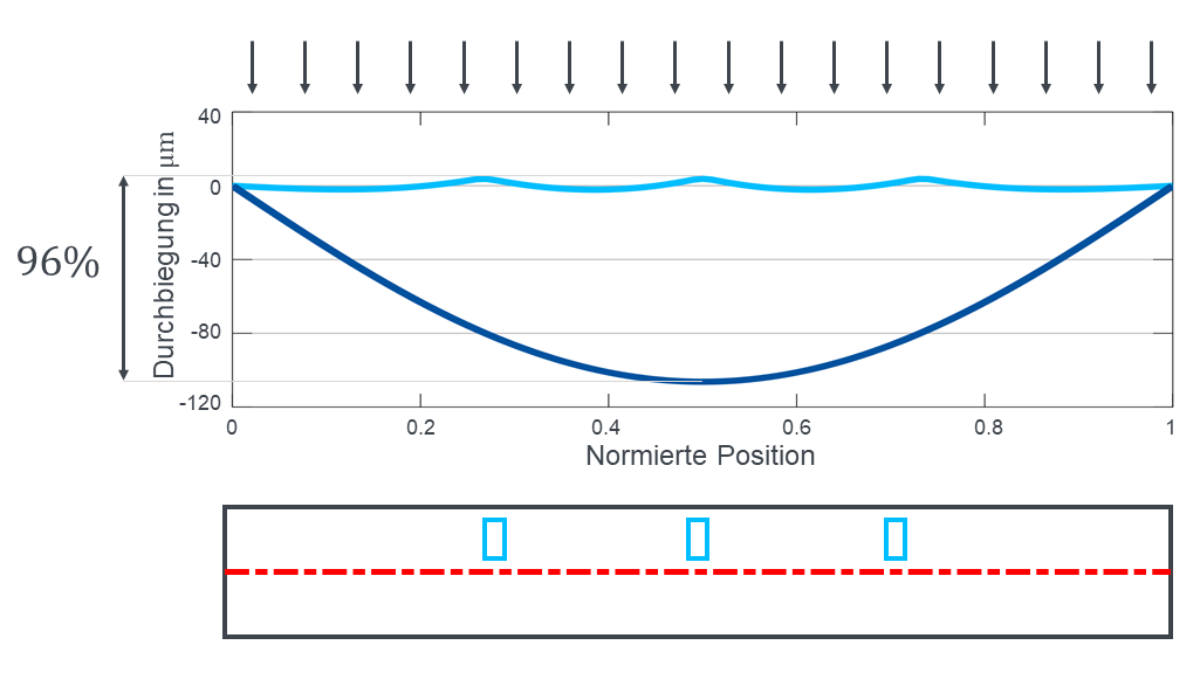
Image: (c) ISYS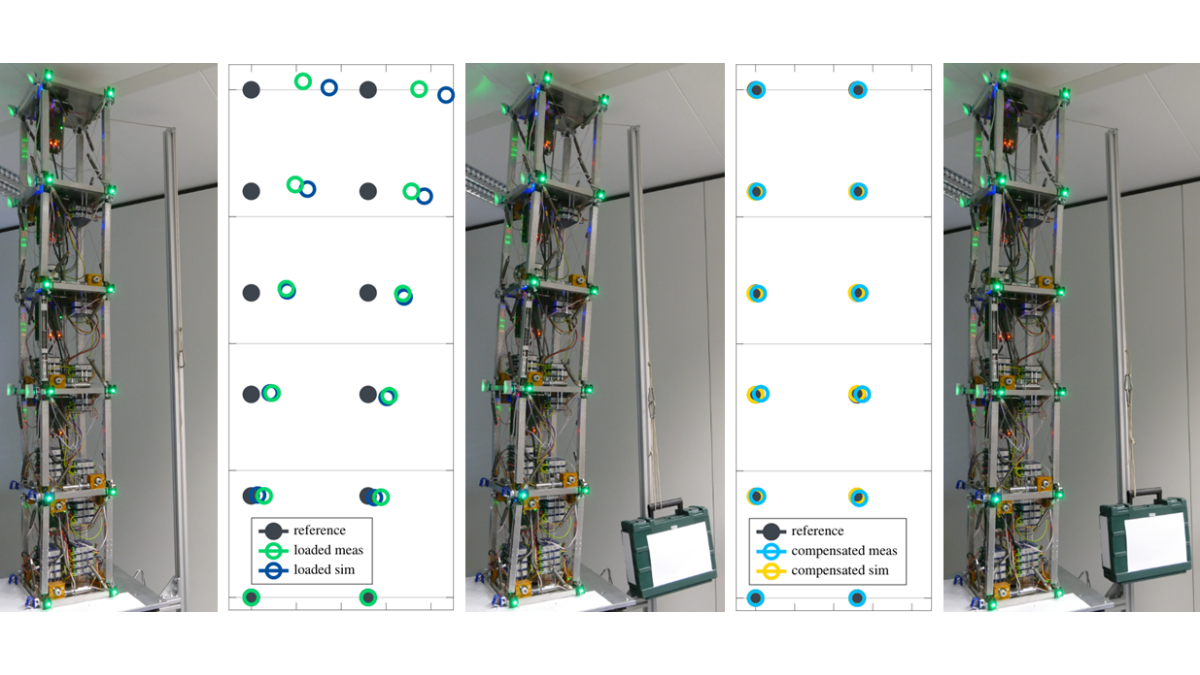 Image: (c) ISYS
Image: (c) ISYS
Image: (c) ISYS
Image: (c) ISYS
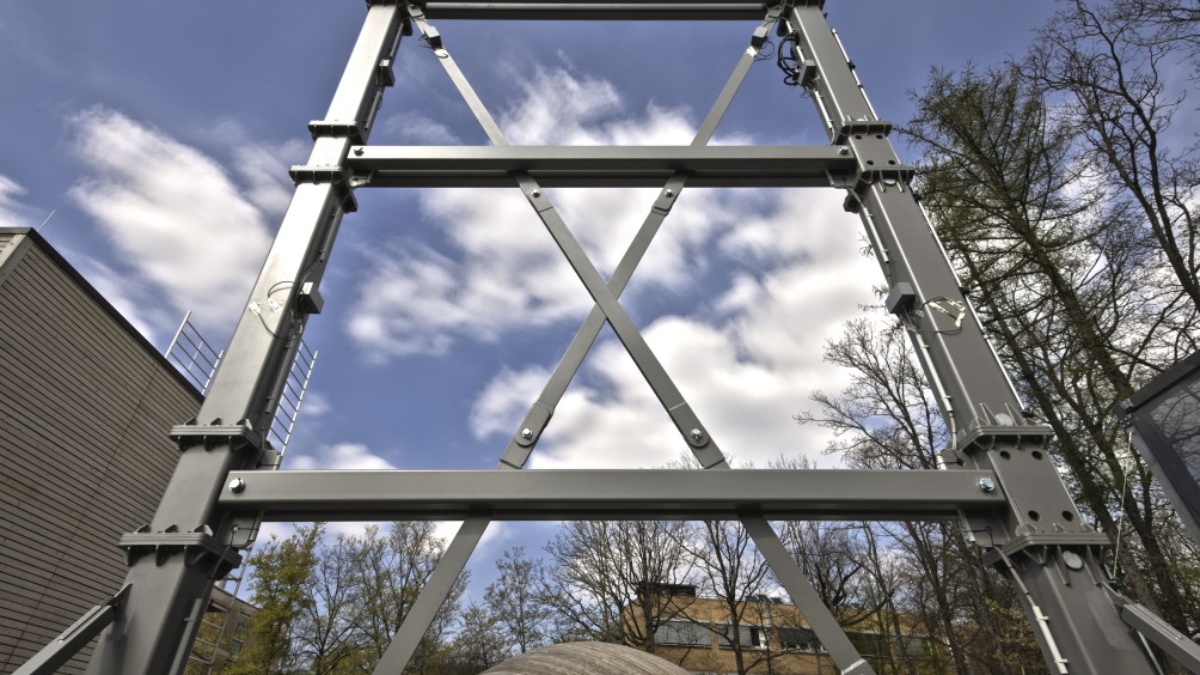
Image: (c) ILEK
The project addresses the following research questions:
- Which mathematical models are suited for the control design of adaptive structures?
- What are adaptive control algorithms that can automatically adapt to changes of the system?
- How can we design local controllers, which together guarantee global stability?
- How can distributed control concepts replace current models that rely on a hierarchical structure, thus rendering a “master controller” obsolete. Functional groups are created dynamically, based on the current state.
- How can we validate the performance of the developed control algorithms in experiments?
From a control engineering point of view, adaptive structures differ in several aspects from mechatronic systems and systems of process engineering. Through their functional elements with integrated actuators and sensors, many inputs and outputs are present. Thus, the input – output behavior of the system is of high dimension, rendering the control design a problem of multiple-input, multiple-output (MIMO) control.
Classical control concept for MIMO-control assume a central processing unit. The controller is designed and implemented as a centralized controller with access to all sensor outputs and actuator inputs. However, this concept is not suitable for adaptive buildings due to their multitude of active elements distributed over the entire structure, with large distances in between leading to high communication delays if the connections are realized using a common bus topology, e.g. Ethernet. However, these elements are, of course, physically coupled. This presents a challenge, as the project B04 aims at developing distributed control concepts, which operate on local hardware and rely on local sensor measurements and actuators only. To enable the exchange of information on demand, these local controllers will be digitally interconnected. Consequently, optimizing the underlying network structure offline and online is part of our research in this project.
Conventional control concepts typically lack the ability to adapt to drastically changing structure geometries and parameters of a building. In this project, we want to develop reconfigurable control concepts, which adapt autonomously to changes of the underlying controlled system. By focusing especially on the reconfiguration in the case of actuator failures, this research significantly improves the reliability and usability of an entire adaptive building.
Furthermore, integrated fluidic actuators from C02 are modelled as a system with distributed parameters. Based on this, a system analysis provides valuable insights for the system design in C02. B04 is also concerned with model based design of the underlying pressure control loop and the superimposed static compensation.
Subproject Leader
- Prof. Dr.-Ing. habil. Dr. h.c. Oliver Sawodny, Institute for System Dynamics
Contact

Spasena Dakova
M.Sc.Doctoral Researcher

Melanie Gschweng
M. Sc.Doctoral Researcher


